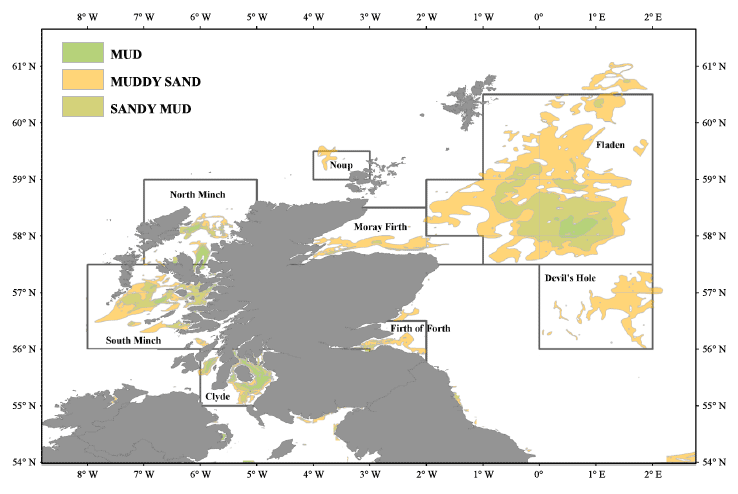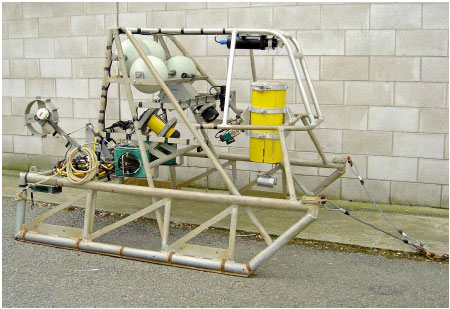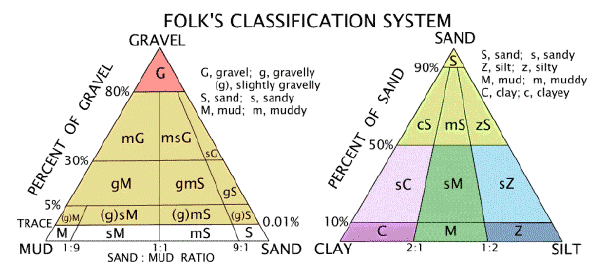Scottish Marine and Freshwater Science Volume 3 Number 9: Data Mining of the Nephrops Survey Database to Support the Scottish MPA Project
Marine Scotland Science conducts annual underwater television surveys to estimate the abundance of Nephrops norvegicus on muddy sediments in seas around Scotland. Data within the Nephrops survey database will be used to assist with the Scottish Marine Pro
Introduction
The Scottish Marine Protected Area ( MPA) project is a joint initiative overseen by Marine Scotland Planning and Policy, involving Marine Scotland Science ( MSS), Scottish Natural Heritage ( SNH), the Joint Nature Conservancy Council ( JNCC) and Historic Scotland, established to provide advice to Scottish Ministers on the selection of MPAs in the seas around Scotland. MPAs are part of the Scottish Government's three pillar approach to marine nature conservation, which is based on species conservation, site protection and wider seas policies and measures 1 . To support government objectives, SNH and JNCC have developed lists of Priority Marine Features ( PMFs), habitats and species of conservation importance, and identified a subset of PMFs to be applied as search features in the MPA designation process ( JNCC, 2012). Burrowed mud is a broad habitat search feature and further information on this habitat and component biotopes and species (which include sea pens and burrowing megafauna) , in both Scottish territorial and offshore waters, is required to inform MPA site selection ( MPA Network Report, 2011).
Marine Scotland Science conducts underwater television ( UWTV) surveys of areas of burrowed mud around Scotland, on an annual basis, to assess stocks of the Norway lobster, Nephrops norvegicus. In August 2010, during discussions with SNH and JNCC, it became evident that the data collected during these surveys could usefully contribute to the MPA project. It was agreed that MSS would collate and explore data to:
- Generate Geographic Information System ( GIS) layers based on available information, including mapping analysed sediment samples collected from surveys conducted between 2008 and 2010.
- Provide information on the distribution and abundance of N. norvegicus and sea pens, Funiculina quadrangularis, Virgularia mirabilis and Pennatula phosphorea.
- Provide information for shelf edge, deep water and sea loch areas where available.
- Compare the two scoring systems used by MSS and JNCC to assess sea pen abundance.
- Produce a written report on work carried out.
This report describes the 'data mining' work carried out. It includes background information on the Nephrops UWTV survey and summary information on the mud habitat in the main survey areas, including photographs and maps based on the GIS layers provided to JNCC and SNH. Various meetings were held to discuss and refine data outputs and interim data sets were provided during the course of the work, as detailed in Annex A.
MSS Nephrops UWTV Surveys
Nephrops are burrowing megafauna, limited in their distribution by the extent of muddy sediment in which they construct their burrows. Within the main Nephrops assessment areas (referred to as functional units) (Figure 1), the sea bed areas surveyed are, in most cases, based on sediment distribution as mapped by British Geological Survey ( BGS). The survey design is randomly stratified, with strata based on sediment type ( BGS criteria; mud, muddy sand and sandy mud) and/or geographical divisions.

Figure 1: Nephrops functional units and distribution of mud sediments (from British Geological Survey, 2002) around Scotland.
Nephrops UWTV surveys were first carried out by MSS in inshore waters on an experimental basis is 1989 and surveys at Fladen started in 1992. In more recent years, survey effort has been focused in the main functional units, i.e. Fladen, Moray Firth, Firth of Forth, North and South Minch and the Clyde and latterly in the Sound of Jura and the Devil's Hole. The location and the precise number of stations surveyed in each functional unit vary from year to year. Other mud areas at Noup, Stanton Bank and in west coast sea lochs are surveyed periodically. Footage of offshore deep mud has also been collected opportunistically on MSS deepwater surveys which are primarily trawl surveys for deepwater finfish species.
The survey method, which was developed by MSS, typically involves the use of a purpose built sledge (Figure 2), which is deployed from a research vessel and towed along the sea bed at speeds of 0.6 to 1 knot for ca. 10 minutes. The sledge is equipped with lights, and both video and stills cameras, plus equipment to record the station depth, the height of the sledge (and camera) above the seabed and distance travelled during the tow. During each tow, approximate counts of Nephrops burrows are made and other species and features observed are noted. The footage, which is recorded onto DVD, is subsequently reviewed and Nephrops burrows are repeat counted according to agreed protocols by at least two individuals working independently ( ICES, 2008). Average burrow densities are raised to the known area of stock distribution (typically based on sediment data) and these are then adjusted to account for known biases ( ICES, 2007; ICES, 2009) to provide absolute estimates of Nephrops abundance.

Figure 2: UWTV sledge used to survey Nephrops populations around Scotland.
At some of the deepwater survey stations it was not possible to deploy the UWTV sledge because of unsuitable sea conditions (large swells lifting the sledge off the seabed) and unknown ground type (possibility of rocks). Sea lochs are also potentially hazardous because they are confined areas, shallow and often densely creeled. In these situations areas were surveyed using a drop-frame arrangement, suspended approximately one metre above the sea bed and allowed to drift with the ship. Although sea bed UWTV footage was obtained, when using the drop frame it was not possible to derive reliable density estimates for any species or features observed because the viewed area can not be accurately calculated.
Sediment Sampling and Particle Size Analysis
In addition to the information on Nephrops, various ancillary data and samples are collected during the surveys, notably sediment samples for particle size analysis ( PSA). These are collected at the end of each UWTV run using a mini van Veen grab attached to the sledge, or occasionally using a Day grab if the mini-grab fails or the ground is unsuitable. A sub sample of sediment is frozen at sea in preparation for PSA. In the laboratory, samples are freeze dried and analysed using a laser diffraction granulometer to determine the particle size distribution of the sediment sample. All samples are analysed following United Kingdom Accreditation Service ( UKAS) approved operating procedures. The Folk (1954) classification scale (Figure 3) is used to describe the sediment type. In terms of Nephrops habitat, the sediments of interest are 'muddy sand', 'sandy mud' and 'mud'. 'Muddy sand' is roughly equivalent to sediment comprised of 10-50% silt and clay, 'sandy mud' 50-90% silt and clay and 'mud' 90% or higher silt and clay.

Figure 3: The system devised by Folk ( 1954) is based on two triangular diagrams. It has 21 major categories and uses the term 'mud' (defined as silt plus clay). Diagram from United States Geological Survey website.
Sea Pen Abundance and Other Observations
Since 2005, MSS has assessed the abundance of three species of sea pen, F. quadrangularis, V. mirabilis and P. phosphorea, according to a four point scale (Table 1). This assessment is made at the time the UWTV footage is reviewed and is based on the reviewers' overall impression of the occurrence of sea pens throughout the run. Prior to this (in 2003 and 2004), only information on the presence or absence of sea pens was noted during the review process. Other fish and benthic species observed during UWTV runs are also recorded, although these are not routinely quantified or consistently identified to genus or species. Evidence of anthropogenic activities e.g. trawl marks is also recorded.
Contact
There is a problem
Thanks for your feedback